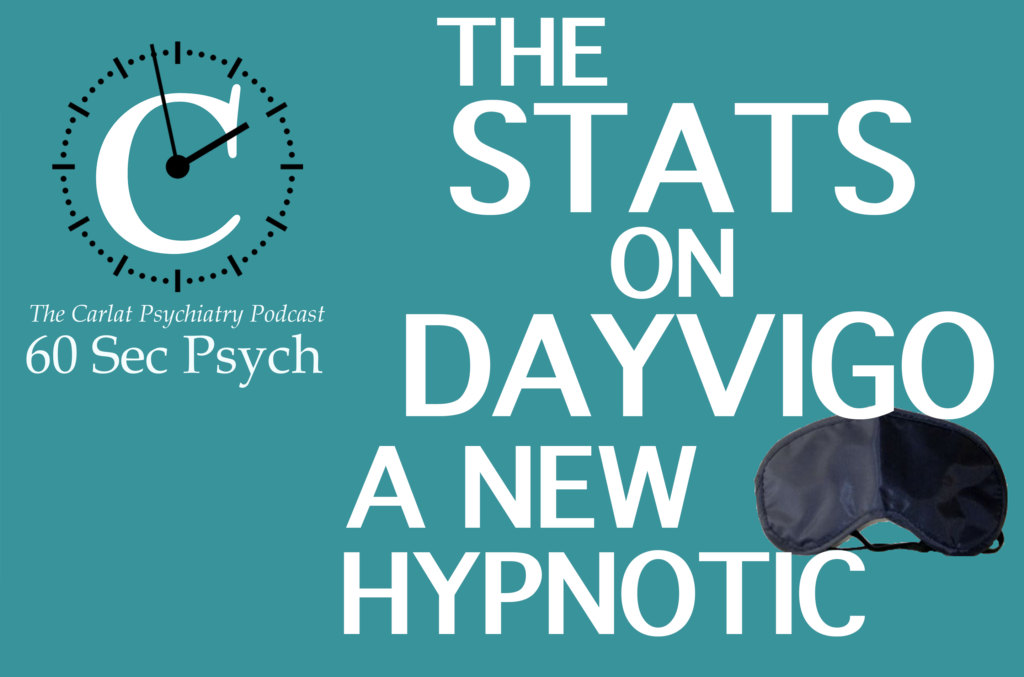Lemborexant/Dayvigo is the second in sleep med to join the orexin receptor antagonist family. It’s now on the pharmacy shelves, where it sits beside Suvorexant/Bellsomra, released in 2015. Landry I, Nakai K, Ferry J, et al. Pharmacokinetics, pharmacodynamics, and safety of the dual orexin receptor antagonist lemborexant: Findings from single-dose and multiple-ascending-dose phase 1 studies in healthy adults. Clin Pharmacol Drug Dev. 2020;10.1002/cpdd.817. [Link]
Published Today: 6/27/20
Duration: 1 minute, 49 seconds
Transcript:
Lemborexant/Dayvigo is the second in sleep med to join the orexin receptor antagonist family. It’s now on the pharmacy shelves, where it sits beside Suvorexant/Bellsomra, released in 2015. Today, we review its pharmacokinetics from a new industry-sponsored meta-analysis of 3 RCTs by Ishani Landry:
Lemborexant reaches its peak in 1-3 hours. Tell patients to take it right before going to bed.
Its half life is 17-19 hours, 30% of the drug is still in the bloodstream the next morning, but this didn’t seem to cause any next-day functional effects. Patients should allow at least 7 hours of sleep when they take lemborexant. One advantage of the orexin class is that they are better studied ─ and have better safety metrics ─ in the elderly than the z-hypnotics.
Start lemborexant at 5 mg/night and titrated as needed to a max of 10 mg/night. Watch out for drug interactions with CYP3A inhibitors and inducers. Strong CYP3A inhibitors like nefazodone and HIV meds can increase it 4-fold, while moderate ones like the calcium channel blockers increase it about 1.5 fold.
The analysis included a Japanese study, but race did not seem to effect lemborexant‘s pharmacokinetics
Got Feedback? Take the podcast survey.


_-The-Breakthrough-Antipsychotic-That-Could-Change-Everything.jpg?1729528747)



